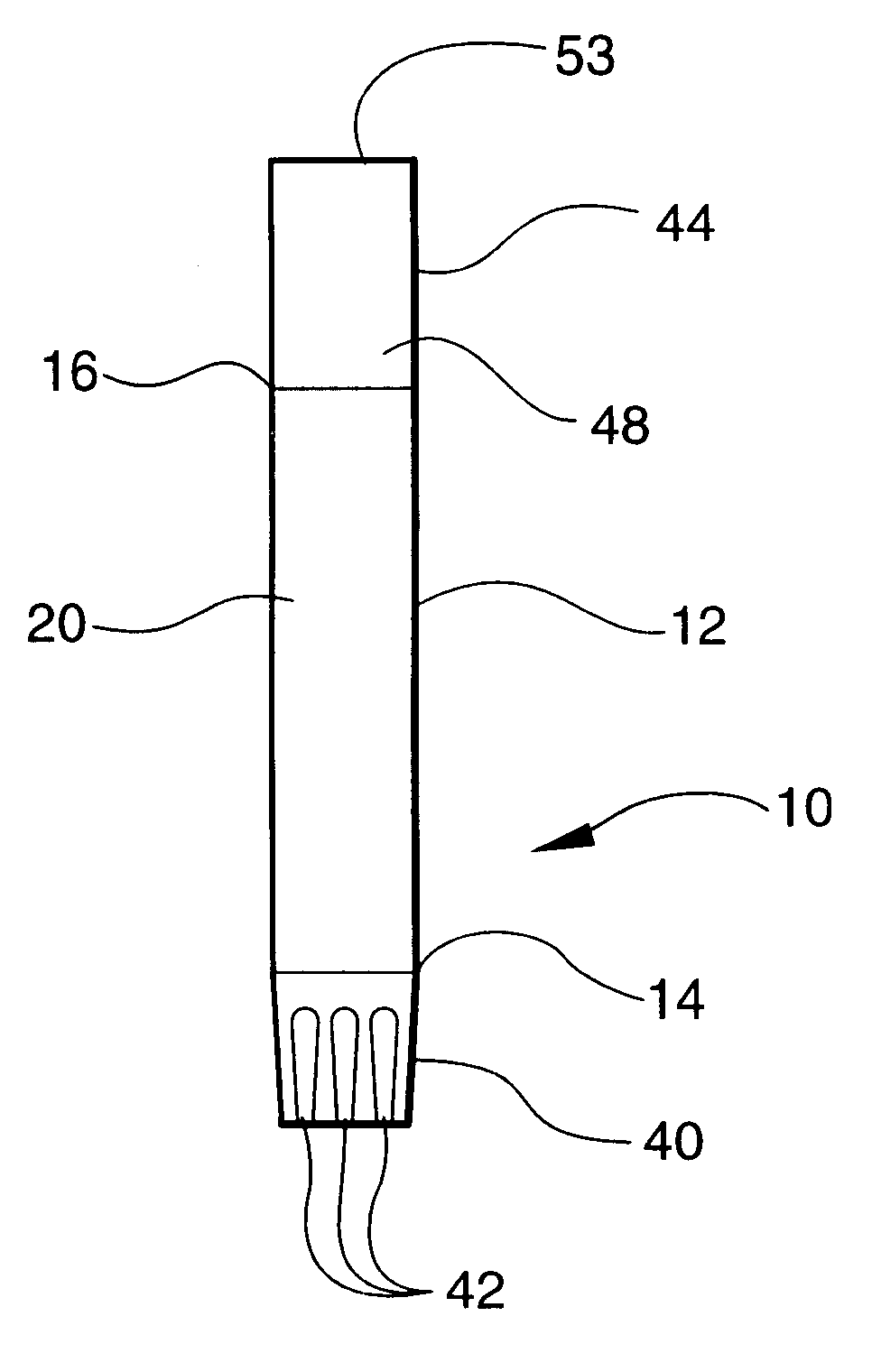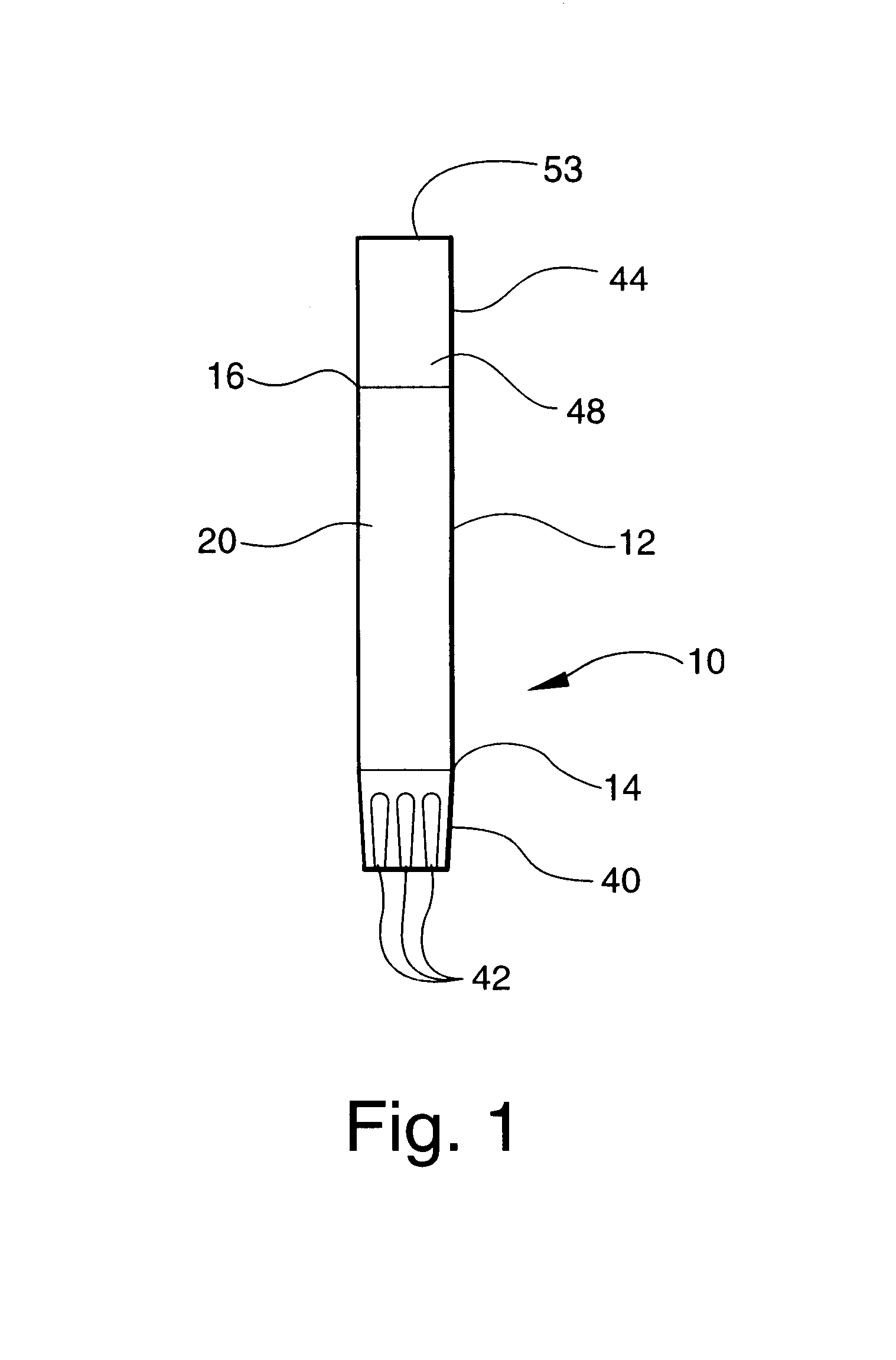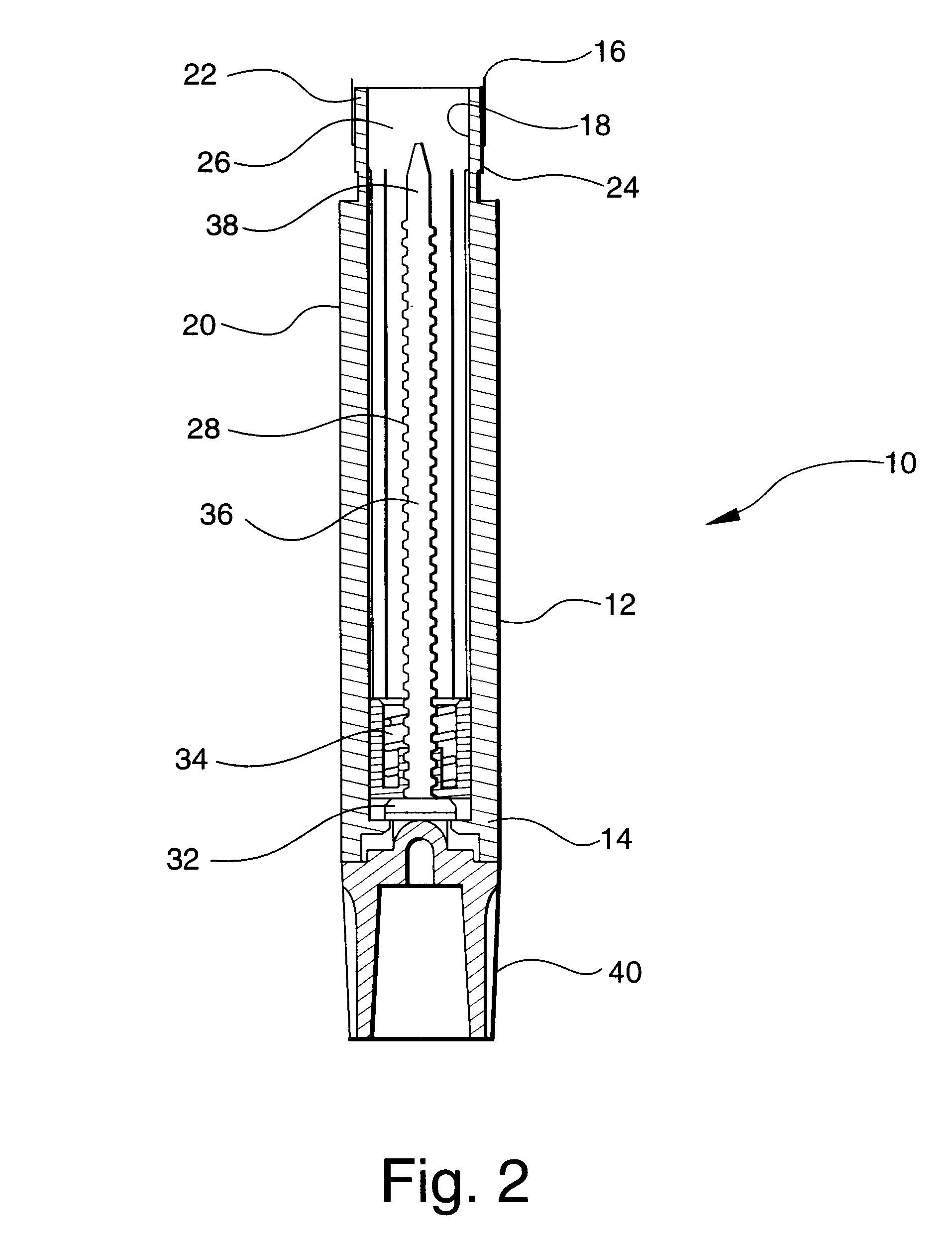Emollient for cuticle treatment and delivery system therefore
a technology of emollient and cuticle, which is applied in the direction of packaging, drug compositions, and packaging toiletries, can solve the problems of cuticle area wet, oily, or greasy feeling, uncomfortable feeling and/or undesirable appearance,
- Summary
- Abstract
- Description
- Claims
- Application Information
AI Technical Summary
Benefits of technology
Problems solved by technology
Method used
Image
Examples
example 2
Ingredient Suppliers
Phase A of both Examples is an improved emollient phase, which may also serve as the carrier phase containing active ingredients for delivery to the selected area. Phases B and C include active ingredients, which in the preferred embodiments, are generally antioxidants, antifungals and fragrance oils. The present invention, however, may or may not contain one or more active ingredients.
The emollient composition of Examples 1 and 2 were prepared in the following manner:
1. The solid waxes of Phase A were combined and melted at 90.degree. C. They were then cooled to 80.degree. C and the remaining constituents of Phase A were added. This mixture was mixed with moderate agitation for 1 hour. (Miconazole nitrate will not dissolve completely into the waxes.)
2. The temperature of the Phase A constituents was maintained at 80.degree. C. and, once the Miconazole nitrate was 90% dissolved, Phase B was added to Phase A and mixed with moderate agitation for 10 minutes to crea...
PUM
| Property | Measurement | Unit |
|---|---|---|
| melt temperature | aaaaa | aaaaa |
| temperature | aaaaa | aaaaa |
| temperature | aaaaa | aaaaa |
Abstract
Description
Claims
Application Information
 Login to View More
Login to View More - R&D
- Intellectual Property
- Life Sciences
- Materials
- Tech Scout
- Unparalleled Data Quality
- Higher Quality Content
- 60% Fewer Hallucinations
Browse by: Latest US Patents, China's latest patents, Technical Efficacy Thesaurus, Application Domain, Technology Topic, Popular Technical Reports.
© 2025 PatSnap. All rights reserved.Legal|Privacy policy|Modern Slavery Act Transparency Statement|Sitemap|About US| Contact US: help@patsnap.com



